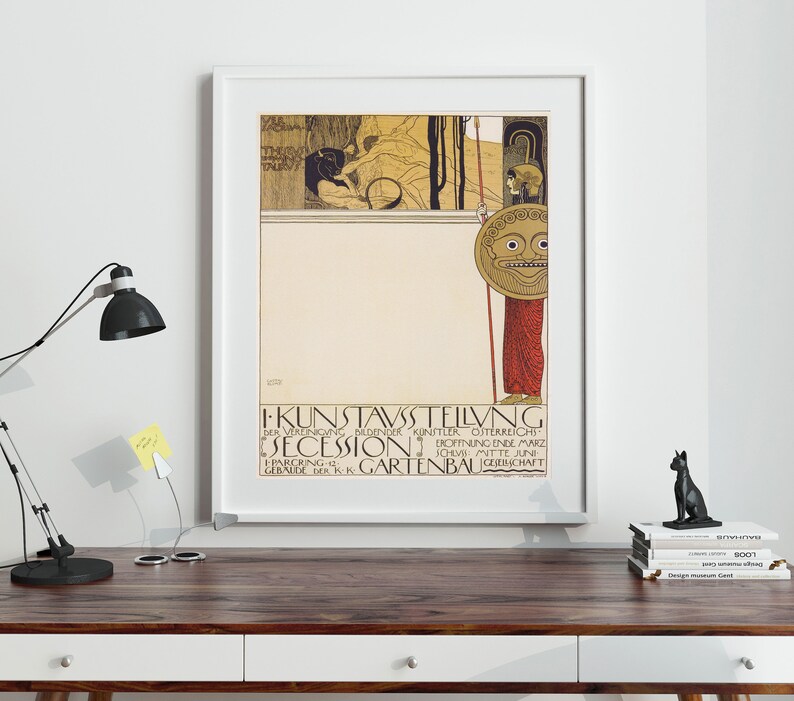

That artistic movement is, in fact, at the origin of the birth, a few years later, of one of the major currents in modern art, Expressionism. The artist’s talent and brio, from his precocious start to his excessive decorative effects, where gildings and the emerging expressionism are dominant, are the foundations of a new period, which flowered in Vienna at the turn of the century. Gustav Klimt‘s part in the emerging of that movement is a major one. The Pinacothèque de Paris, in partnership with Arthemisia Group and 24 ORE Cultura – Gruppo 24 ORE, wishes to examine once again an essential aspect of Art Nouveau, which was developed in Vienna at the start of the 20th century under the name Secession. In the Time of Klimt, The Vienna Secession | Pinacothèque de Paris Temporary exhibitions of post-modern art - has so far failed to find a consistent identity.Gustav Klimt, Judith I, detail, 1901. Sezession museum - torn between preserving Klimt′s symbolist Beethovenfries and organising The Secession got stuck with the latter, and today, it is purely historic and the Looking at the "golden period" of Gustav Klimt, the branches of this period are clearly visible: The Vienna modernism on the one hand, the chocolate boxes with "Adele" designs on the other. The Secession as a school of painting finally lost its significance by the end of WWI. Max Oppenheimer, Anton Faistauer, Herbert Boeckl and Anton Kolig are internationally less known, but their expressionist works are displayed in the Belvedere, too.

The Secession school, however, got closer to decorative work - Art Nouveau was increasingly commercialised and less interested in the rapid, progressive development of art that is typical for the modern age. Ornaments kills the Sezession & Jugendstil A few years later, so approximately aroundġ910, young artists like Oskar Kokoschka and Egon Schiele became known to a wider public andĮxpressionism has finally found its way to Vienna. Richard Gerstl, once again an artist whose work you can trace in the Belvedere. On contrast to the Secession, these two schools abandoned aesthetics in their paintings and emphasised expressive, impulsive features - soon picked up in Austria by the early expressionists like In the same year, the art school of the " Brücke" ("Bridge") formed in Dresden and the " Fauves" in Paris. Klimt and Moll "ceding" from the secession. In 1905, a conflict about sale procedures arose between some key secessionists like Klimt and Moll on the one hand, and other people on the other - resulting in Wiener Werkstätte was founded in 1902 by some secessionists. To expand art to items of your daily use, the Is another important representative of this period. Gustav Klimt soon became the central figure of the secessionists, Carl Moll What the Wiener Sezession emerged fromįrom the beginning, the secessionists wanted to get away from the establishment: Out of theĪcademy of Fine Arts, away from conventional museums and galleries, to enhance every aspect of life and culture with art. To illustrate this development, the Austrian National Gallery atīelvedere Palace has a small but fairly good selection of symbolist works byĮdvard Munch, Giovanni Segantini or Ferdinand Hodler. Influenced by French artists and Edvard Munch, Viennese painters aroundĪbandon the historicist tradition that dominated mainstream art of Austria at that time. As with most styles that followed one another, the borders between "secessionism" (if such a thing exists) and symbolism are blurred. The "Wiener Secession" was founded in 1897 and became the hotbed for modern art, finally giving rise to Austrian branches of ViennaĪrt Nouveau (Jugendstil) and indirectly to other modern styles, such as the expressionism ofĮgon Schiele or Oskar Kokoschka.


I have written an article that deals with the Secession as a building and as an exhibition venue in this article, I would like to briefly outline the role that the "Secession" as a modern school of painting played - in a way, if the Secession building and museum is the hardware, the historic Secession school would be the software. Mosque-like architecture makes it very popular even with tourists who don′t give a damn about art. The " Secession" is a characteristic building that you can spot on pretty much every other postcard of Vienna its


 0 kommentar(er)
0 kommentar(er)
